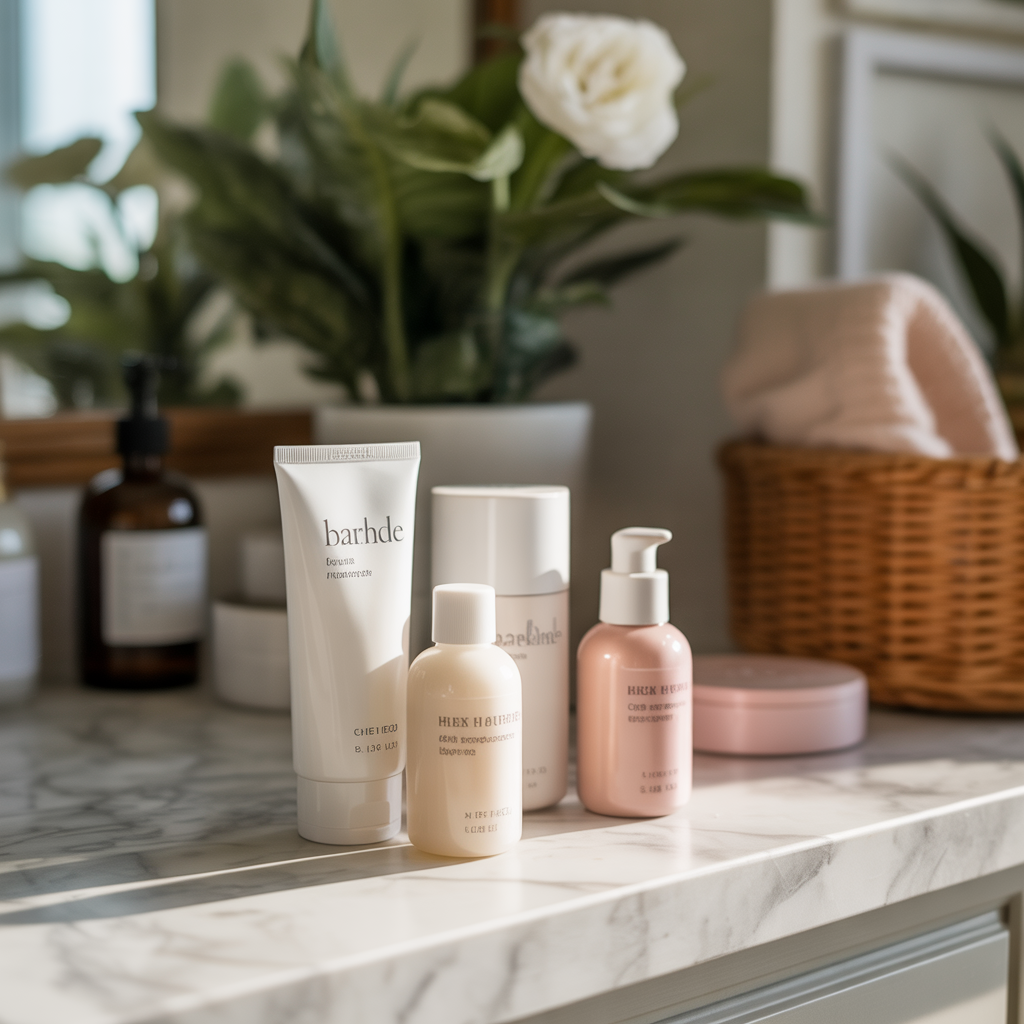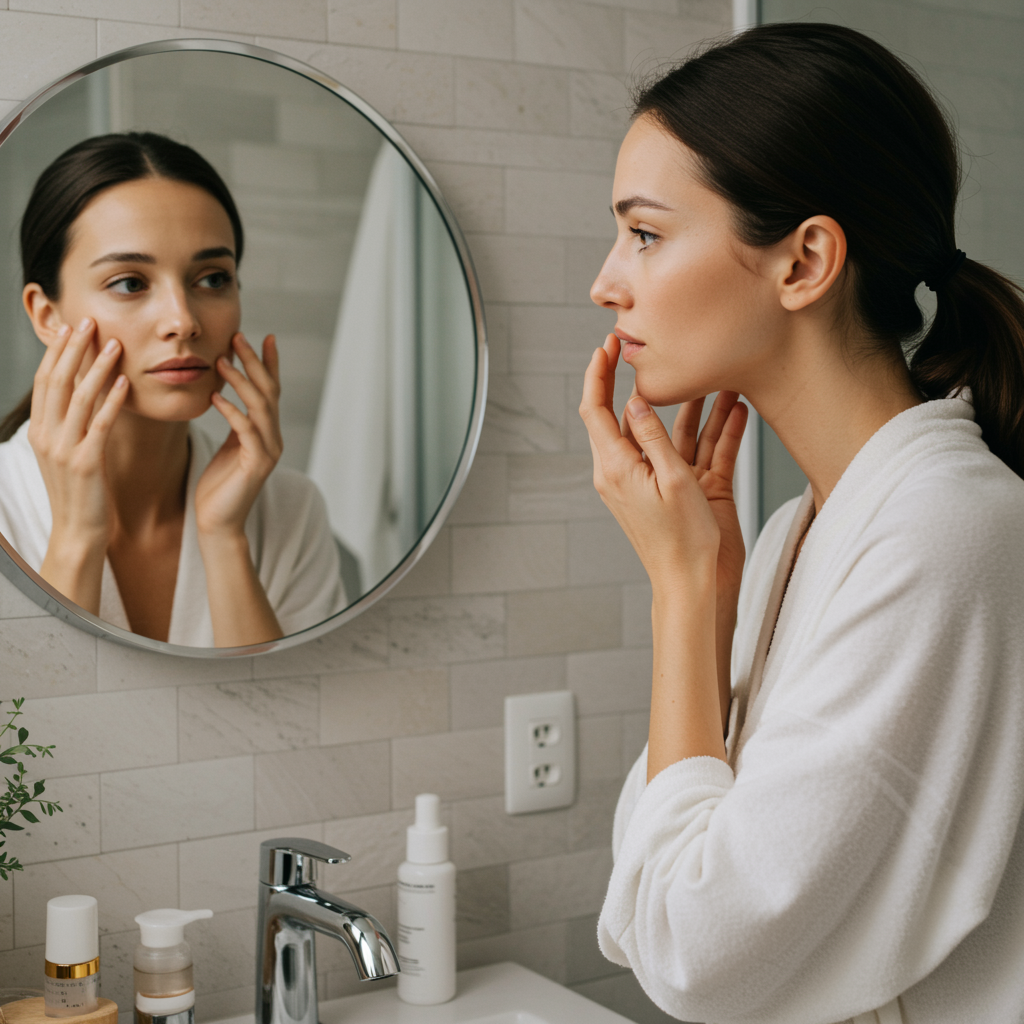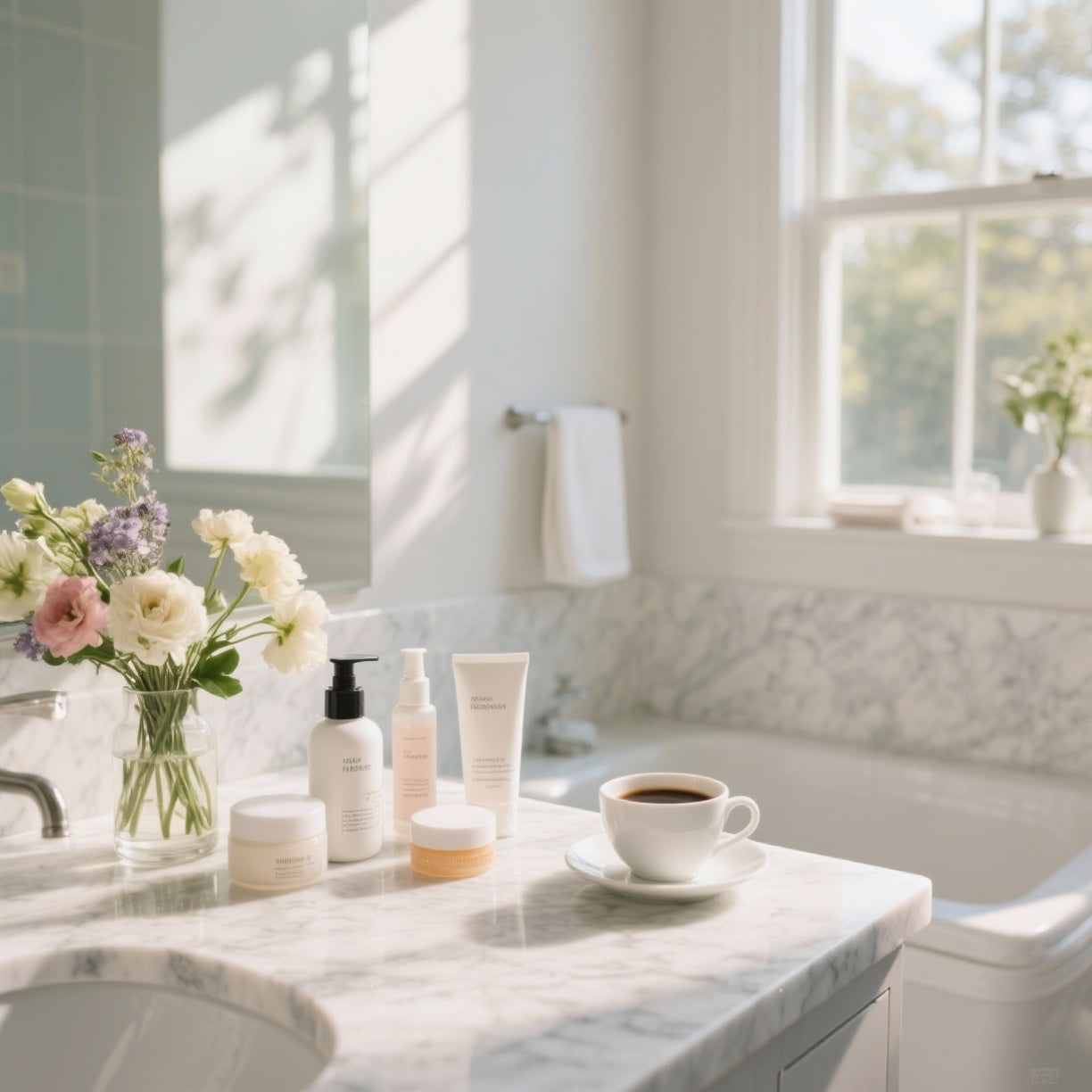Introduction:
Pick up any skincare product and you'll find a list that reads like a chemistry textbook. Aqua, glycerin, dimethicone, phenoxyethanol—what does it all mean, and more importantly, what actually matters for your skin? In an industry filled with buzzwords and marketing magic, understanding ingredient labels is your superpower. Let's decode the science so you can make informed choices that truly serve your skin.
Why Ingredient Order Matters
The Rule: Ingredients are listed in descending order by weight. The first five ingredients make up the majority of the formula—usually 70-80%. Everything after the preservative system is present in minimal amounts, often less than 1%.
What This Means: If you're buying a product "with hyaluronic acid" but it's listed 15th after the preservatives, you're not getting therapeutic amounts. The hero ingredient should appear in the first 5-7 ingredients for meaningful impact.
Pro Tip: Water (aqua) is almost always first in water-based products. Don't let this discourage you—what comes next is what counts.
The Power Players: Ingredients Worth Seeking
Hyaluronic Acid (Sodium Hyaluronate) What It Does: A humectant that holds up to 1000 times its weight in water. Plumps skin, smooths fine lines, and maintains hydration. Look For: Multiple molecular weights for multi-layer hydration Ideal Concentration: 0.1-2% Works Best With: Ceramides, glycerin, and occlusives to seal in moisture ÉlanDerm Product: Hydra-Plump Serum features tri-molecular hyaluronic acid
Vitamin C (L-Ascorbic Acid, Ascorbic Acid) What It Does: Powerful antioxidant that brightens, protects from environmental damage, and stimulates collagen production. Look For: 10-20% concentration in a stable, pH-appropriate formula Stability Note: Vitamin C oxidizes easily. Store in dark, airtight bottles and use within 3-6 months. Works Best With: Vitamin E and ferulic acid for enhanced stability and efficacy ÉlanDerm Product: Luminosity Boosting Serum with 15% stabilized Vitamin C
Niacinamide (Vitamin B3) What It Does: The multitasker—minimizes pores, regulates oil, strengthens barrier, fades hyperpigmentation, and reduces inflammation. Ideal Concentration: 2-10% Works Best With: Almost everything. Pairs beautifully with hyaluronic acid, peptides, and antioxidants. Myth Buster: Old research suggested it couldn't be used with Vitamin C, but modern formulations prove they work well together.
Retinol (Vitamin A) What It Does: The gold standard anti-aging ingredient. Increases cell turnover, stimulates collagen, and reduces fine lines. Look For: 0.25-1% for beginners; up to 2% for experienced users Important: Use only at night, always with SPF during the day. Can cause sensitivity. Alternatives: Bakuchiol, retinyl palmitate for sensitive skin
Peptides (Matrixyl, Argireline, Copper Peptides) What They Do: Amino acid chains that signal skin to produce collagen and elastin. Anti-aging workhorses. Look For: Matrixyl 3000, Matrixyl Synthe'6, or copper peptides Ideal Concentration: 3-10% Works Best With: Hyaluronic acid and antioxidants ÉlanDerm Product: Renewal Peptide Serum with Matrixyl 3000 complex
Ceramides What They Do: Lipids that make up 50% of your skin barrier. Repair, protect, and prevent moisture loss. Look For: Ceramide 1, 3, and 6-II (now called Ceramide EOP, NP, and AP) Works Best With: Cholesterol and fatty acids for complete barrier repair Essential For: Dry, sensitive, compromised skin
Alpha Hydroxy Acids (Glycolic, Lactic, Mandelic) What They Do: Chemical exfoliants that dissolve dead skin cells, brighten, and improve texture. Ideal Concentration: 5-10% for at-home use Glycolic Acid: Smallest molecule, deepest penetration, best for anti-aging Lactic Acid: Gentler, hydrating, good for sensitive skin Mandelic Acid: Largest molecule, gentlest, perfect for acne-prone skin
Beta Hydroxy Acid (Salicylic Acid) What It Does: Oil-soluble exfoliant that penetrates pores, fights acne, and reduces inflammation. Ideal Concentration: 0.5-2% Best For: Oily, acne-prone, or congested skin Note: Can be drying; always follow with hydration
The Supporting Cast: Ingredients That Enhance
Glycerin The unsung hero. A humectant that draws moisture into skin. Should appear in the first 5 ingredients of hydrating products.
Squalane A lightweight oil that mimics skin's natural sebum. Hydrates without clogging pores. Perfect for all skin types.
Centella Asiatica (Cica, Gotu Kola) A soothing, healing botanical that calms inflammation and supports barrier repair. Essential for sensitive or compromised skin.
Green Tea Extract (Camellia Sinensis) Antioxidant-rich, anti-inflammatory, and protective. Often paired with Vitamin C for enhanced protection.
Ingredients to Question (Or Avoid)
Fragrance (Parfum) The Issue: Top allergen and irritant. Synthetic fragrances can contain hundreds of undisclosed chemicals. ÉlanDerm Stance: We use only naturally derived scents from essential oils in minimal amounts, or we keep products fragrance-free.
Denatured Alcohol (Alcohol Denat., SD Alcohol) The Issue: Extremely drying and irritating. Disrupts skin barrier. Exception: Fatty alcohols (cetyl, stearyl, cetearyl) are beneficial—they're emollients, not irritants.
Sulfates (SLS, SLES) The Issue: Harsh surfactants that strip skin's natural oils. Can cause dryness and irritation. Better Alternative: Gentle cleansers with coco-glucoside or decyl glucoside.
Parabens (Methylparaben, Propylparaben) The Controversy: Endocrine disruptors in high concentrations. While research is mixed, many prefer alternatives. ÉlanDerm Stance: We use alternative preservatives like phenoxyethanol and ethylhexylglycerin.
Mineral Oil & Petrolatum The Issue: Occlusive ingredients that can clog pores in acne-prone skin. Not inherently bad, but better alternatives exist. Better Options: Squalane, plant oils, ceramides
Understanding Percentages: When More Isn't Better
The Myth: Higher percentage = better results The Reality: Efficacy depends on formulation, pH, molecular size, and delivery system.
Examples:
- Vitamin C is effective at 10-20%. Beyond that, you increase irritation risk without added benefit.
- Niacinamide works beautifully at 5%. Going to 10% doesn't double results.
- Retinol at 2% isn't twice as effective as 1%—it's twice as irritating.
The Sweet Spot: Therapeutic concentrations in well-formulated products outperform high percentages in poor formulations every time.
Decoding Common Marketing Terms
"Clean Beauty" No legal definition. Generally means free from controversial ingredients, but standards vary wildly by brand.
"Natural" or "Organic" Not regulated in skincare. "Natural" doesn't mean safe (poison ivy is natural), and synthetic doesn't mean harmful (many synthetic ingredients are gentler than natural alternatives).
"Clinically Proven" Look deeper. How many subjects? What was the study design? Who funded it? Legitimate studies are published in peer-reviewed journals.
"Dermatologist-Tested" Could mean one dermatologist tried it once. More meaningful: "dermatologist-formulated" or "tested on sensitive skin."
"Hypoallergenic" No official definition. Means less likely to cause allergies, but not impossible.
How to Read a Label Like a Pro
Step 1: Identify the first 7-10 ingredients. This is your formula's foundation.
Step 2: Look for your target ingredients in therapeutic concentrations (first half of the list).
Step 3: Check for potential irritants or ingredients your skin doesn't tolerate.
Step 4: Verify the preservative system (usually toward the end). All water-based products need preservatives to prevent bacterial growth.
Step 5: Consider the formula type. Serums have higher active concentrations than moisturizers. Cleansers wash off, so expensive ingredients are somewhat wasted.
Building Your Ingredient IQ: Questions to Ask
- Is this ingredient in a sufficient concentration to be effective?
- Does this ingredient work with or against others in my routine?
- Does the formula have proper pH for ingredient stability?
- Are there potential irritants that my skin has reacted to before?
- Is the packaging appropriate for ingredient stability? (Vitamin C needs opaque, airtight packaging)
The ÉlanDerm Ingredient Philosophy
We believe in transparency, efficacy, and respect. Every ingredient earns its place in our formulas. We list concentrations of key actives. We use sustainable sourcing. We never include ingredients just for marketing appeal. What you see on our label is what your skin gets—no fillers, no false promises, just scientifically backed ingredients at therapeutic concentrations.
Conclusion
Knowledge is power, especially when it comes to what you put on your skin. You don't need to memorize every chemical name, but understanding key ingredients and their functions transforms you from a passive consumer into an informed advocate for your own skin health. Next time you pick up a product, take a moment to read beyond the marketing claims. Your skin will thank you.
Want to learn more? Visit our Ingredient Glossary for deep dives into every ingredient we use, complete with concentrations and scientific references.





